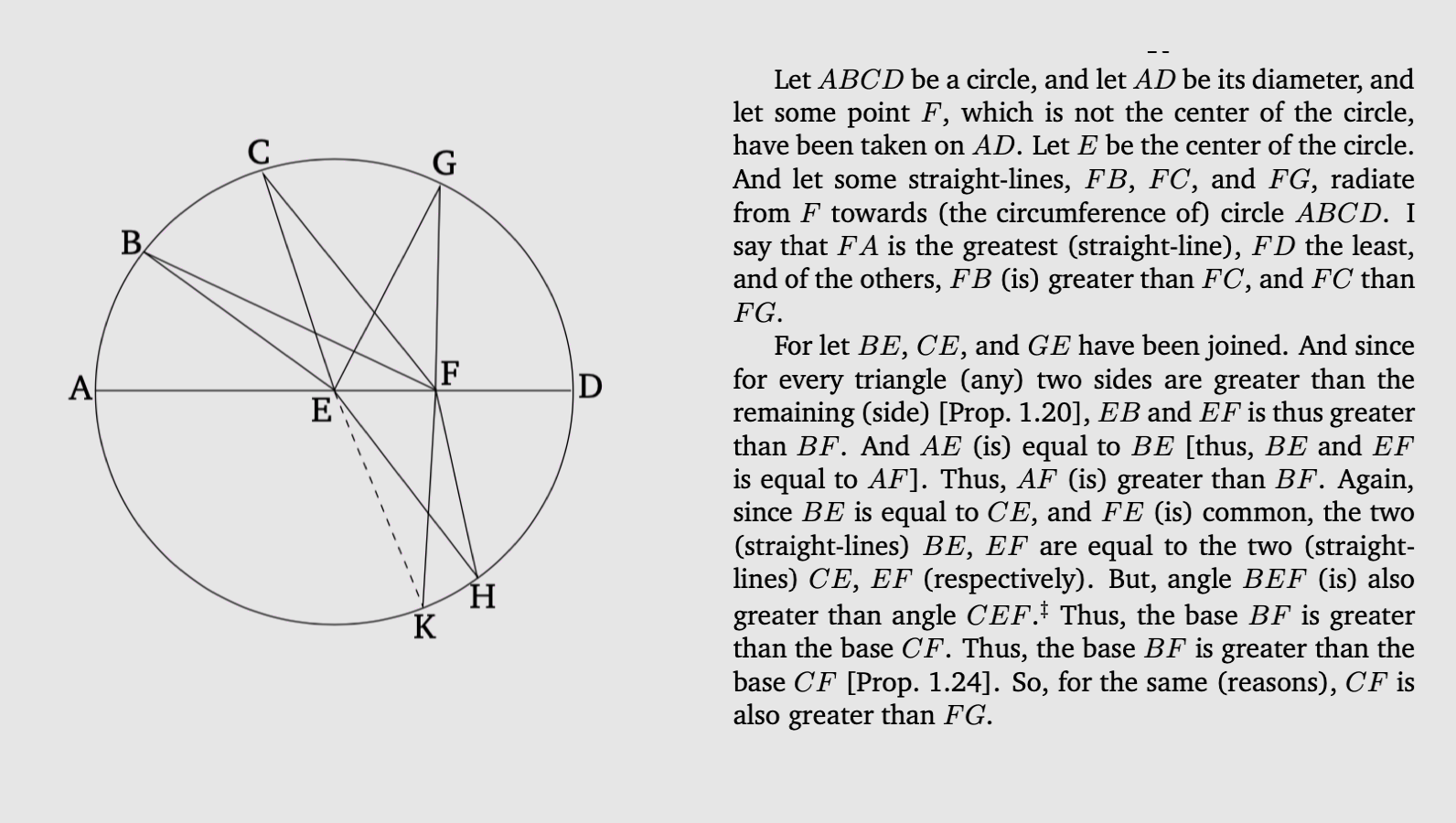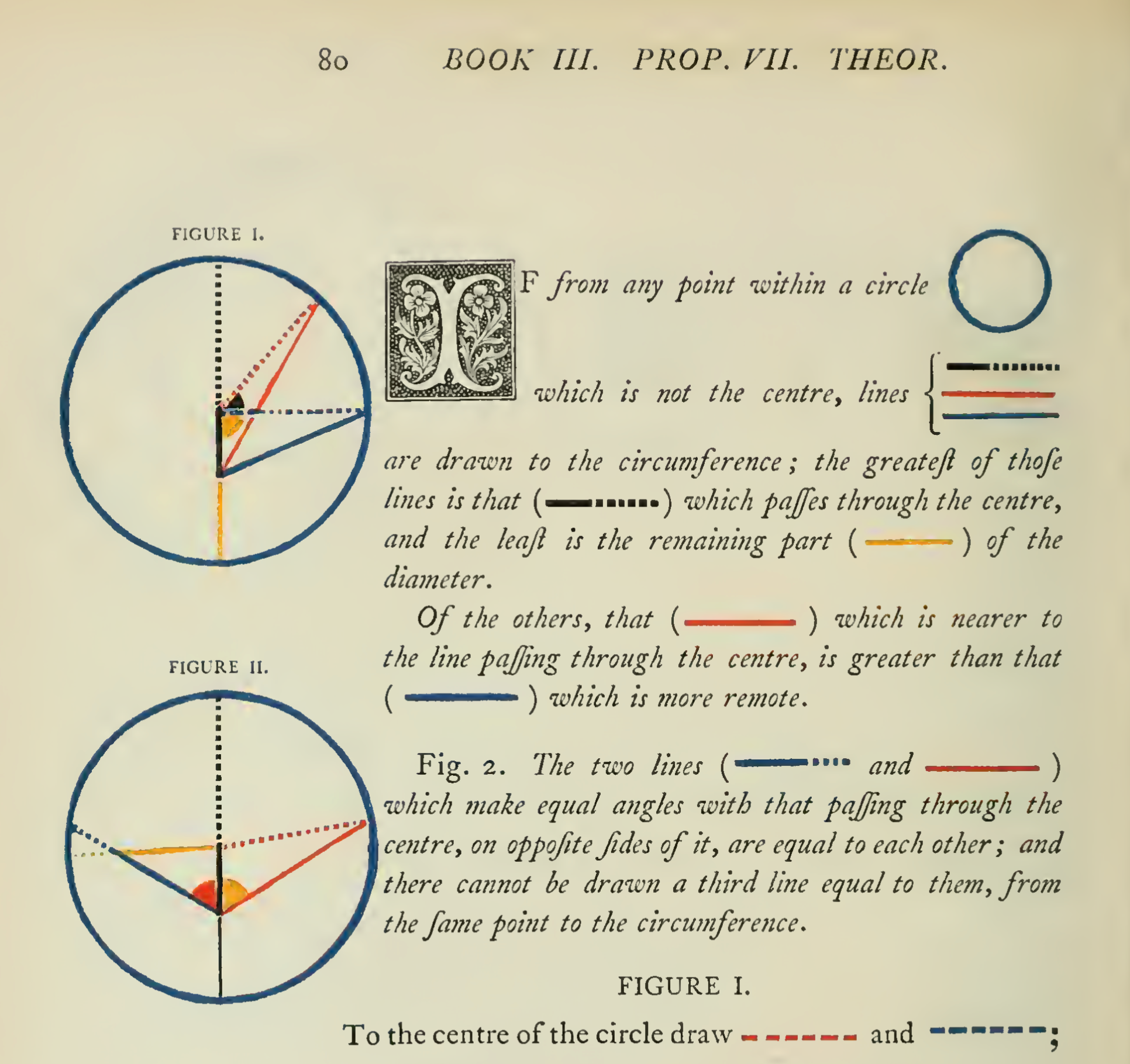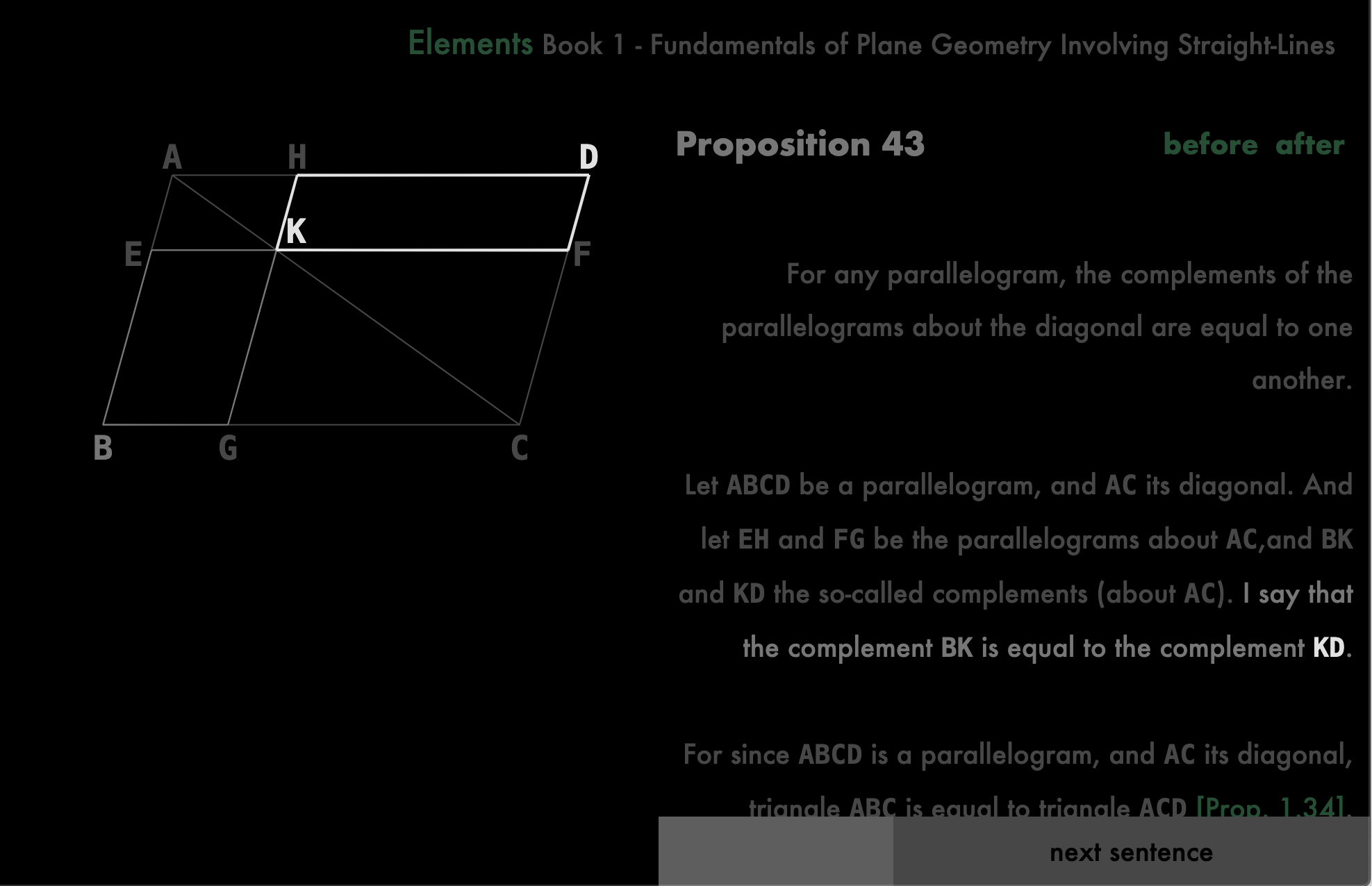An experiment in presenting geometry.
This is a clip from a geometry book, specifically a translation of the 2300-year-old Elements. Reading it requires going back and forth between the figure and the prose multiple times in most of the sentences, which can become rather tedious and borderline torturous when you need to read it again. Coloring it would help greatly.
This is from Oliver Byrne’s work (a digital version can be found at c82.net/euclid). About 180 years ago, he made use of colored print and made a phenomenal contribution. This raises a question: Now that we have digital displays that refresh 60 times every second, what more can be done?
The usual answer is to record a video. However, this dictates a rhythm, isolates fragments, strains potential participation, and often turns ridiculous production costs. While films are awesome, their teaching of technical material is not their strong aspect.
Now follow this: elements.ratherthanpaper.com/1.43. And press j/k or right/left on your keyboard or use the gray buttons at the bottom of the page. That should move a cursor along the prose and highlight the figure for symbols. You can also click on sentences.
The human eye can't distinguish between more than a handful of colors, and picking colors for all the lines is somewhat difficult. But with differential brightness for resonant highlights, the complexity of the figure is not an issue as long as it is a reasonable figure. Color can be reserved for further development like the presentation of symbolic expressions.
Also, I tried to keep the figure visible in a separate column as the prose gets scrolled, which seems like a more fundamental issue for digital books. But it is impossible to argue for when the software is taken to be a generic money-making machine of vanishing marginal costs or a simulation of absolute laws. Proper utilization of screen space will have to wait for a new generation.
As for ancient geometrical analysis and modern algebra, even apart from the fact that they deal only in highly abstract matters that seem to have no practical application, the former is so closely tied to the consideration of figures that it is unable to exercise the intellect without greatly tiring the imagination, while in the latter case one is so much a slave to certain rules and symbols that it has been turned into a confused and obscure art that bewilders the mind instead of being a form of knowledge that cultivates it.
— R. Descartes, A Discourse on the Method, 1637
This is mathematics at the beginning of modernity, summarized by the inventor of Analytic Geometry; introduced as 'my method' later in the same book.
Screens have been part of computers for about fifty years now. But a couple thousand years of imaginative work on paper determined that screens should be an imitation of paper, for the most part. The basic container of data was inherited as files and folders. Much of the private computer was put together in a company that makes photocopy machines. Within which the preview of a print had a monumental benefit along with a pointer device and a virtual catalog. Word processors, spreadsheets, and slides came to be the most used software and suggested a future as typical products. And we come to look at web pages that were conceived to be accessible versions of physical documents.
Imitation is mostly effective, but it can also be frustrating. However, frustrations are a bit difficult to demonstrate. First, it is not obvious how information technology should leave the office and become relevant to life besides facilitation of bureaucratic work or consumption of packaged entertainment. Second, criticism of digitized paperwork (i.e., finance) seems to fall on deaf ears. And I will not try to point out that relevance at a time when anarchy and chaos are synonymous. Nor will I be an impotent reactionary and define a principle in opposition to the concentration of power. Instead, the new medium is taken as ground to experiment around prevailing institutional dependence and brute specialization that beats the imagination out of people.
Of course, this alone can't leave a dent in the curricular consumption called education, but one question had to be made explicit: What can be done better than on paper? So that we come to be aware of the cultural momentum and possibly see a course correction.
Before you start, ensure you have Node.js and npm installed on your system. Follow the installation guides available on the Node.js official website.
-
Open a Command Line Interface (CLI):
Navigate to the root directory of the downloaded project files using a command line interface.
Note for Windows Users: You will need to have a Bash interface installed, such as Git Bash. You can download it from Git SCM Downloads.
-
Install Dependencies:
Run the following command to install the required npm packages:
npm install
-
Build the Project:
Execute the build scripts with the commands below:
sh build.sh sh build-elements.sh
These scripts compile and prepare the project for running.
-
Start the Local Server:
To start the local development server, run:
node local.js
Upon successful startup, the command line will display the message:
listening at http://localhost:3000For ongoing development, use Rollup in watch mode to automatically rebuild files when changes are detected:
rollup -c -w -
Access the Project:
Open a web browser and navigate to the URL indicated in the command line output, for example:
http://localhost:3000You should now see the application running.


